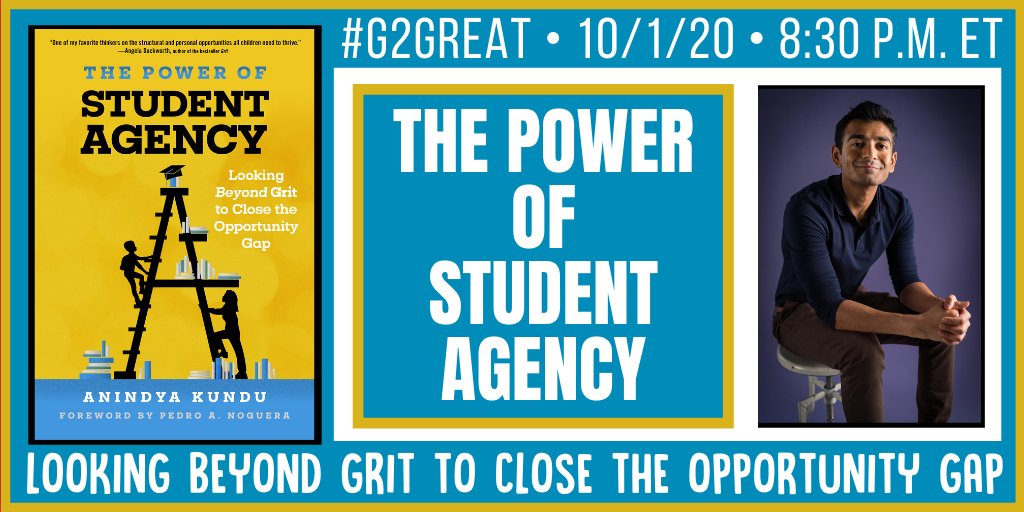
By Brent Gilson
An archive of this weeks chat with Dr. Anindya Kundu can be found here.
This past week we had the pleasure of chatting with Dr. Anindya Kundu about his book The Power of Student Agency. As we look at the hurdles our students face, we very often forget how resilient our students are and see them through a deficit lens.
What motivated you to write this book?
“I was motivated to write TPSA after years of seeing how strapped schools, students, and districts can be when it comes to resources. At the same time, there are so many students overcoming incredible challenges in their lives (homelessness, incarceration, broken families, etc) and schools that still create cultures of success despite limitations, that I felt these stories needed to be shared. This book compiles a couple years of my fieldwork research meeting exceptional people and sharing their stories to make the case that achievement is possible for all students, if we can get behind them and support them holistically.”
The Power of Potential
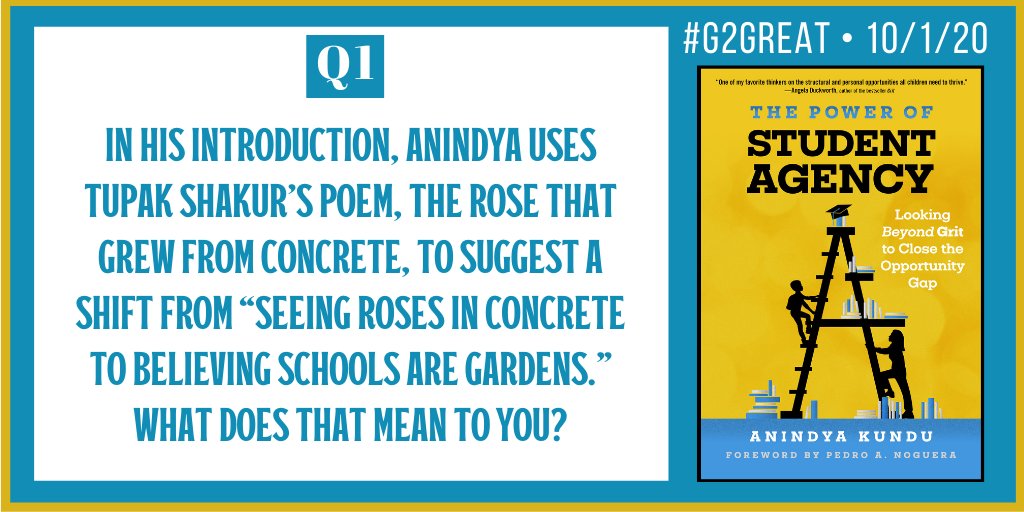
A few years ago I was touring a potato farm, bear with me I am going somewhere with this, as we walking in one of the building I noticed a drain hole in the floor. I walked towards the drain and found this.
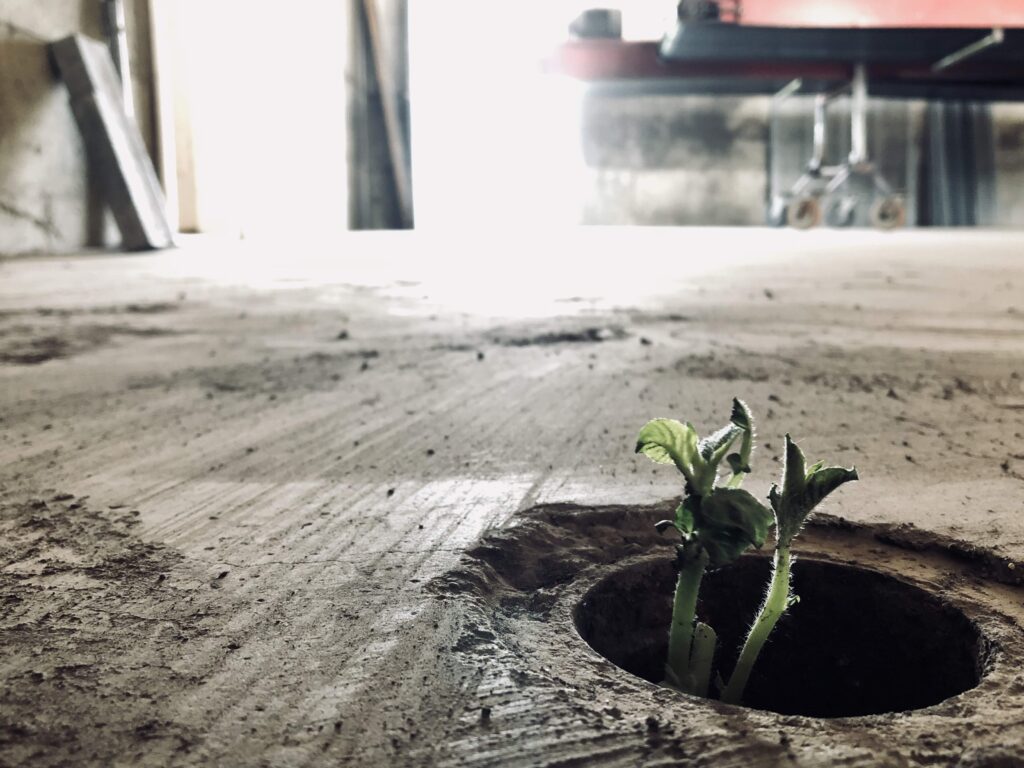
Through the concrete, with so little nutrients and the required materials to grow, this little plant was growing. Instead of focusing though on the adversity faced, I think we look at the plant and its potential despite the conditions faced. When we look at our students who face hurdles we (teachers generally) tend to look at the deficits as a starting point instead of the potential. As Dr. Kundu asks in the question, “What happens when we stop looking at the Rose in Concrete and begin looking at our schools as gardens” we see things like this.
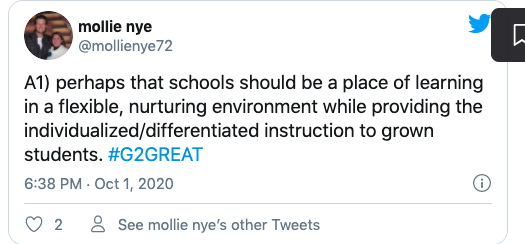
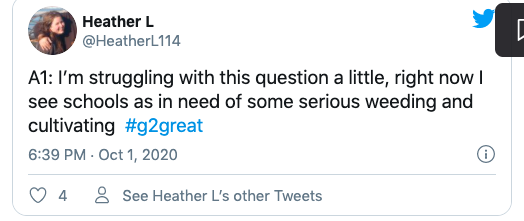


I feel like the term “grit” has always been misused and in our current Covid reality of teaching it continues to be. I love the different reflections that came out of this simple question because they look beyond just saying things are not working and offer up hope. As Heather mentioned, schools are in need of some heavy weeding; by focusing on the schools that need to look at their practices, we are taking some of the weight off our students. By not falling back on the analogy of the rose through the concrete or the potato plant and instead looking at the environment we are providing and the potential of our students to succeed, we move away from this “grit” concept and towards a space were students see that where they are planted is fluid and can be adapted to fit their needs.
What are your BIG takeaways from your book that you hope teachers will embrace in their teaching practices?
“The whole book is structured around highlighting the social side to grit and resilience. All students have these internal reservoirs of necessary character traits for academic and professional success; however, structural limitations are real and must be acknowledged and addressed because otherwise, we place the onus of achievement on the student alone and absolve ourselves. Instead, when we constantly think about a student in terms of their agency, or potential, we reintroduce that teaching and learning are foremost social practices that require collective responsibility.”
Shifting the System Requires Change
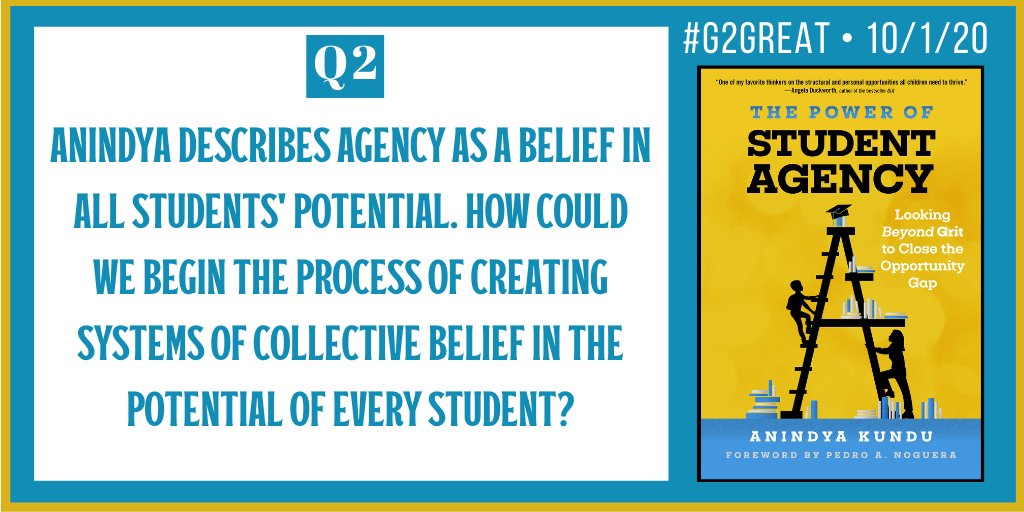
When Covid-19 first hit there was this call to change the system. To create systems that provided our students with what they needed to succeed in this new normal. The thing was, however, as some made moves to make those changes it was a lot easier to talk about it than do it. Especially when the practices and thinking you have held so near and dear are the ones that are limiting our students. So how do we begin? We let go of power, we question the systems that are in place that have continued to limit the potential of some students and we get uncomfortable. Growing pains are a real thing. I started a new weight lifting plan a few weeks back. On day three EVERYTHING hurt. I started to look at how easy it would be to go back to me tried and true (and easy at this point) routine. Maybe just add a little weight. But I also understood that the hurt was my muscles repairing and growing stronger. If as teachers we are honest in our desire to create a system where all of our students are able to meet their potential we have to be willing to push through the discomfort of change that is required. No more calling for system changes but being unwilling to change our practice.
Just this morning I was talking with a colleague about the needs of a student. We discussed this idea that so often we ask students, especially students with learning needs, that they change to fit our needs and we don’t change to fit theirs. So where do we begin? Always with our students.
What is a message from the heart you would like for every teacher to keep in mind?
“I hope that teachers and educators can challenge themselves to see the giftedness in all students, even the ones who can be more difficult. They need our help more than others! If we can learn how to take a child’s existing interests, competencies, and talents and use those as motivational tools, we can create vibrant learning environments where all students thrive. This requires a thorough understanding of who our students are as people. It may sound complicated, but I hope the narratives I share (of how homes and families, educators and schools, and students themselves) can personify actionable, simple, and FREE strategies to inspire student agency.”
Our Students Don’t Need Saving
The hero or saviour narrative that is often applied to teachers of students who learn differently or have obstacles in their lives that potentially disrupt learning needs to be one of those things we put aside. Our students don’t need saving, they need us to be better. These last few months I have often raised the question on social media if our practices are doing more harm than good, especially in this time of Covid-19 where inequity has been under the spotlight. Sadly, it is met by hostility. If we are really interested in shifting and changing practices we have to be willing to change. Our students’ success is not dependnnt on us, because kids will succeed despite us. But we can do more to make room for them to shine. We must purposefully question our practice and explore the gaps we have that limit our students and we can make the moves to be better and help create those opportunities for them to realize their potential.
I am no saviour, hero or gardener. I am a teacher. My students are not statistics. They are amazingly talented human beings who, when provided the space to learn in ways that suit them and display that learning in ways they can shine, they will.
If you are looking for more from Dr. Kundu you can check out these links:
The Boost Students Need to Overcome Obstacles
The “opportunity gap: in US public education – and how to close them
HuffPost with Anindya Kundu: Policing Schools and Dividing the Nation
Expanding on Grit to Close the Opportunity Gap discussion with Anindya Kundu, Angela Duckworth, Pedro Noguera
Jacob Chastain Teach Me Teacher Podcast with Anindya Kundu
Part 2: Teachers Can Begin Fixing the SystemZoom Fireside chat: Anindya Kundu, Angela Duckworth, Pedro Noguera: Expanding on Grit to Close the Opportunity Gap